The pro version of the VG10 has been announced and is set for a 2011 release. Sony is taking the large sensor video technology concept of the NEX, and packaging it into a camcorder form with Pro features similar to the new F3. The NXCAM will be the competitor to the Panasonic AF100, and fits in between the VG10 and the F3. I was a little under-whelmed when I read about the F3. Not because it isn’t a significant development, it looks like a kickass camera, but is way outside my price range. There will be multiple frame rate options with the F3, XLR audio inputs, 35 Mb/s 1080p video, and the recording bit rate is much better. With an add-on module you’ll be able to capture 50 Mb/s if needed (and it is needed as per the BBC broadcast standard). However, the F3 is a Pro cinema tool with a PL lens mount and a large price tag. You could shoot it yourself, but is the type of camera that works best with a small crew to handle properly. The NXCAM seems designed for a single user to exploit if needed, and is based on the NEX autofocus lens mount. The NXCAM seems to address the majority of the limitations of the VG10, like the need for multiple frame rates, XLR inputs, etc. This is all nice, but is the NXCAM an alternative to the VG10, an evolution of the design, or just some added features?
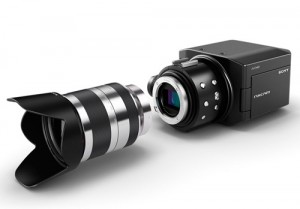 NEX Advantage
NEX Advantage
If Sony were just releasing cameras with fixed lenses or the PL mount, it wouldn’t be so exciting. However, one big advantage of the NEX system is that I can use all my Minolta-Sony lenses as well Mamiya, Hasselblad, etc. The fact that the NEX system can take basically every lens ever made is awesome and a valuable feature for film makers. It’s so awesome that I don’t mind over-looking a lot of the design faults on the VG10 body and camera design. This is also why people shoot with DSLR cameras. They’re not ideal video tools, but the ability to experiment with shallow depth of field and different lenses is just to much fun to ignore. Using the correct adapters you can shoot with Nikon, Canon, Zeiss, Contax, Leica, etc. My personal favorite at the moment is shooting with my Mamiya M645 80mm f/2.8 on the VG10. The manual focus Mamiya lenses are cheap, compact, robust, and have wonderful colors and sharpness. If you only want to shoot in manual focus mode, you have a huge range of lenses to choose from at very attractive prices. I’m adding a Contax G adapter for my awesome Zeiss lenses, and probably one for my Contax C/Y 35mm as well. Where the NEX system has an advantage over DSLRs is in autofocus. The VG10 focuses fast enough that you can shoot with it like a normal consumer handycam, but the large sensor makes even mundane flower video look badass semi-artistic. However, is this needed/wanted in a pro device? Carl-Zeiss has the position that manual focus lenses will always trump autofocus in quality, because you know exactly where your focus point is, and the lens isn’t always trying to find and correct that focus point. On the other hand, the almost-ready-to-be-released RED Epic will allow autofocus with Canon and Nikon lenses (with an add-on module). The idea though, will be to autofocus and shoot, but not to continuously autofocus all the time during shooting like the NEX has.
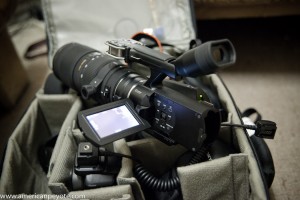 I’ve been shooting with the VG10 for over a month now, and basically love it. But how will the NXCAM compare to the competition? Unlike the Canon 5D-II, the Pro Sony cameras feature a 2K Super 35mm sized sensor that is designed only for video (as I understand it). The Canon cameras have image sensors designed for stills but also do video as an after-thought. The Sony chip output is supposed to output a 1080-sized image, this means great low light capabilities because the sensor is putting out 1080 video, not down-sampling from a 21 megapixel chip (like the Canon does). This means better control of moire, and a large sensor designed (and optimized) for video. If it’s possible to pull a clean frame from the progressive feed off of the video stream, then it’ll make for nice stills as well – but I think this is where the VG10 has an advantage. One reason I like the VG10 is that it’s a true convergence stills-video hybrid device. I can switch between shooting 1080 HD video and 14 megapixel stills in a fraction of a second. I can also shoot with TTL flash or off-camera strobes. Will I be able to do this with the NXCAM (does Sony think I would want to)? The NXCAM will be a Pro video camera with the NEX mount, but probably won’t be ideal as a stills capture device for someone like myself.
I’ve been shooting with the VG10 for over a month now, and basically love it. But how will the NXCAM compare to the competition? Unlike the Canon 5D-II, the Pro Sony cameras feature a 2K Super 35mm sized sensor that is designed only for video (as I understand it). The Canon cameras have image sensors designed for stills but also do video as an after-thought. The Sony chip output is supposed to output a 1080-sized image, this means great low light capabilities because the sensor is putting out 1080 video, not down-sampling from a 21 megapixel chip (like the Canon does). This means better control of moire, and a large sensor designed (and optimized) for video. If it’s possible to pull a clean frame from the progressive feed off of the video stream, then it’ll make for nice stills as well – but I think this is where the VG10 has an advantage. One reason I like the VG10 is that it’s a true convergence stills-video hybrid device. I can switch between shooting 1080 HD video and 14 megapixel stills in a fraction of a second. I can also shoot with TTL flash or off-camera strobes. Will I be able to do this with the NXCAM (does Sony think I would want to)? The NXCAM will be a Pro video camera with the NEX mount, but probably won’t be ideal as a stills capture device for someone like myself.
I really love switching between stills and video with the VG10, but maybe that’s only because I’m still so new to video. I like the ability to shoot stills because it means I can setup lights and shoot with my remote radio triggers to create lighting scenarios, which are just not realistic without a lot of extra external LED lighting equipment. I think that the release of these cameras will also push lighting technology advancements. It’s clear that a need exists in the Indy-film economy for lower cost and lower power lighting. When you have a sensor with excellent low-light sensitivity, you don’t need to setup a bunch of tungsten lights or large LED panels. I think that companies like iKan and manufacturers from China will start to fill this growing niche.
NEX Evolution
Now that the NEX line is almost fully defined, this means that new lenses are coming in 2011. At the low photo end you have the NEX3/5, with the NEX7 coming in 2011 (the NEX 3/5 were there to assess market desire). At the video end there’s the VG10 and NXCAM. You can’t release kickass bodies without adding some fast prime lenses and high-quality zooms to go with them. 2011 is the start of the real video cinema year. 2011 is the year that the tools become available to more people to tell interesting stories with moving images. For a range of price points you have access to high-quality video, many lens choices, post-processing workflows, and distribution mediums. Don’t get blind-sided by the technology. It’s all still just a collection of tools to tell interesting stories. The Last Air Bender is a great example of a high-level production with horrible storytelling. A 1080p video feed at 50 Mb/s of a brick wall is just as boring as a 640 VGA phone video clip of the same subject.
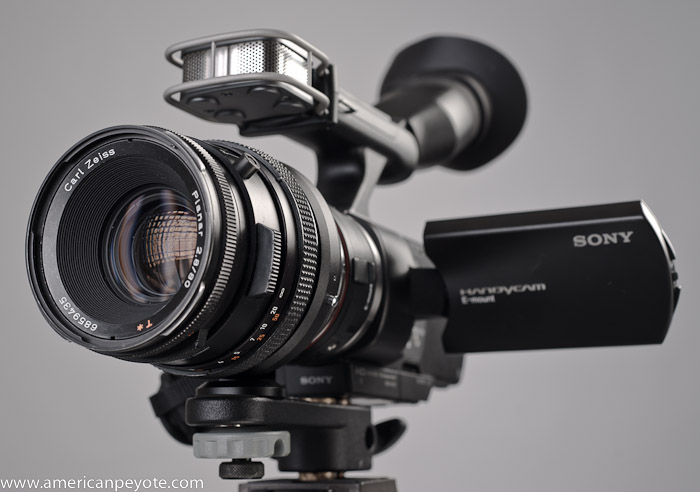
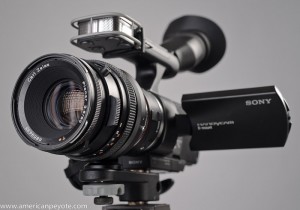
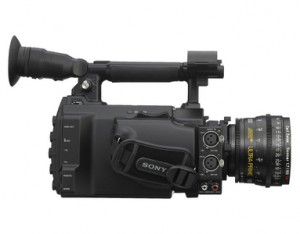
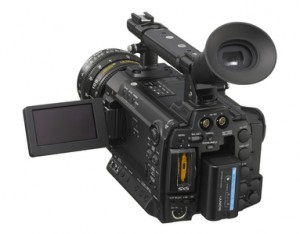 This high price-point places the camera well outside the NEX line. It gives room to offer a NEX Semi-Pro camera at about 3000-6000 USD (which would be in line with the AF100). Of course, the NEX is supposed to be aimed at consumers, not Indy film makers who probably don’t care about auto-focus and adapting Sony Alpha lenses to their video camera, hence the PL lens mount. However, everyone who can create a rumor is suggesting a Pro version of the VG10 will come out in 2011. I think the desire for such a camera exists. The Canon 5D-II DSLR video craze started things, but Sony is the company heading in the right direction with the NEX camcorder concept. It’s the most versatile design, allowing use of all camera lenses in the form of a camcorder, which also works well as a stills capture device.
This high price-point places the camera well outside the NEX line. It gives room to offer a NEX Semi-Pro camera at about 3000-6000 USD (which would be in line with the AF100). Of course, the NEX is supposed to be aimed at consumers, not Indy film makers who probably don’t care about auto-focus and adapting Sony Alpha lenses to their video camera, hence the PL lens mount. However, everyone who can create a rumor is suggesting a Pro version of the VG10 will come out in 2011. I think the desire for such a camera exists. The Canon 5D-II DSLR video craze started things, but Sony is the company heading in the right direction with the NEX camcorder concept. It’s the most versatile design, allowing use of all camera lenses in the form of a camcorder, which also works well as a stills capture device.